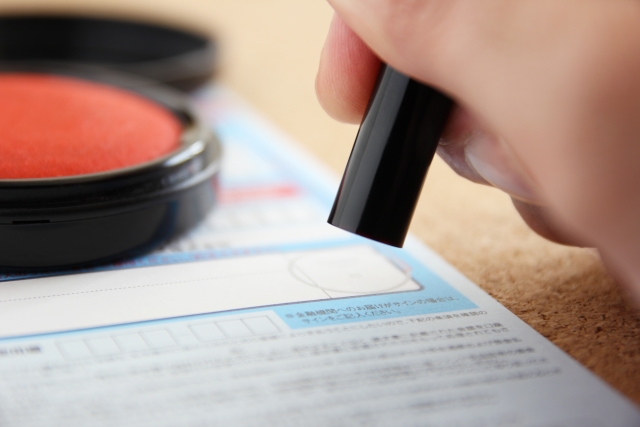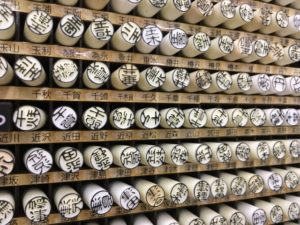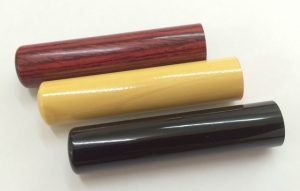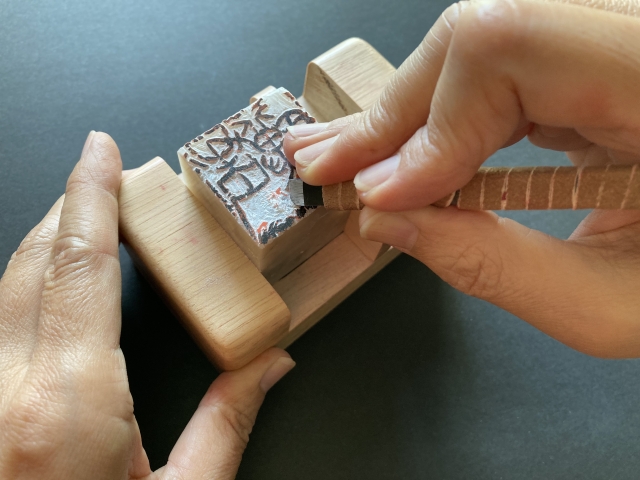In Japan, signing your name isn’t always done with a pen. Instead, people have long used a small personal seal called hanko (also called inkan).
Even in the age of digital signatures, hanko still appears in banks, real-estate contracts, and some workplaces.
Why has this tradition survived—and do you actually need one?
What Is a Hanko?

A hanko is a small cylindrical stamp—usually wood, resin, horn, or metal—with your name carved on the end.
You press it into red ink and stamp the paper to “sign.”
Unlike a handwritten signature that varies each time, a hanko leaves a consistent imprint, which has historically been associated with authenticity and responsibility.
Why Japan Still Uses It
Historical trust
Seals were used for centuries in government and commerce; the habit became part of office life.
Clear accountability
The round red imprint can be matched to a registered person or company.
Ritual and formality
For major contracts, a stamped document still “feels” official to many people.
That said, requirements have been reduced in many procedures, and digital workflows are increasingly common.
Hanko usage today sits at the crossroads of tradition and modernization.
Types of Hanko (Simple Guide)
1) Jitsuin — Officially Registered Seal

Your most formal seal.
It’s registered at the local city office and used for important matters such as major contracts or real-estate procedures.
You can have one registered jitsuin per person. Because it carries legal weight, store it securely and avoid daily use.
2) Ginkō-in — Bank-Registered Seal

The seal you register with a bank for opening accounts and certain transactions.
Many people keep their bank seal separate from the jitsuin for safety.
If a shared seal is lost, you must update registrations at multiple places—time-consuming and risky.
3) Mitome-in — Everyday Seal

A convenient, inexpensive seal for routine matters (for example, acknowledging delivery).
It has no official registration but may still carry responsibility—don’t stamp what you haven’t read or agreed to.
What About “Shachihata”?

Shachihata (a brand name that became generic) is a self-inking, ink-permeable stamp used for everyday tasks at home and work.
It’s handy—no separate ink pad—but not acceptable as a registered jitsuin or bank seal, since the rubber face can deform and multiple stamps can look identical.
The Role of Hanko in Modern Japan

In recent years, many organizations have reduced their hanko requirements, adopting digital approvals and e-signatures.
Still, certain high-stakes procedures may expect a registered seal.
Practically, Japan is in a transition: some offices are fully digital; others still prefer the reassuring red circle.
Do Foreign Residents Need One?

It depends on your lifestyle:
Daily life only? Probably not essential.
Many tasks can be done with signatures or online authentication.
Opening bank accounts / leasing apartments?
A bank seal or simple mitome-in may still be requested.
Buying property / company matters?
Expect to use a registered jitsuin and obtain a seal certificate.
If you plan long-term residency, owning at least an everyday mitome-in (and possibly a bank seal) is practical.
Design, Imprints, and Basic Rules
Shape
Round imprints are standard. Imprints with broken or missing outlines are usually avoided for official use.
Name
The carved letters typically reflect the name you use for registration (full name, family name only, or given name only).
Readability
Stylized scripts are common, but the imprint should be clear enough to verify.
Materials: From Wood to Titanium

Common choices include hardwood (affordable and durable), horn (dense, stamps cleanly),
resin (budget-friendly), and titanium (tough, water-washable, highly durable).
Choose based on durability, price, and look—function matters more than luxury.
Artistic Seals: Tenkoku

Calligraphers and artists often stamp works with a hand-carved seal called tenkoku.
These are creative—sometimes playful—and don’t need to follow registration rules.
They add personality and are a beautiful reminder that hanko is also part of Japan’s visual culture.
Quick Start: If You Need a Hanko
- Decide usage: Everyday (mitome-in), bank (ginkō-in), or official (jitsuin).
- Pick material & size: Durable enough for intended use; keep designs legible.
- Register if needed: For jitsuin, apply at your city office and keep the certificate safely.
- Store separately: Never use your jitsuin as an everyday stamp.
FAQ
Is hanko mandatory everywhere?
No. Many processes accept signatures or digital approval now, but certain formal procedures may still ask for a seal.
Can two people register the same seal?
No. A registered jitsuin is unique to the individual.
Can I use a Shachihata for registration?
No. Self-inking stamps are convenient but not valid for registered purposes.

